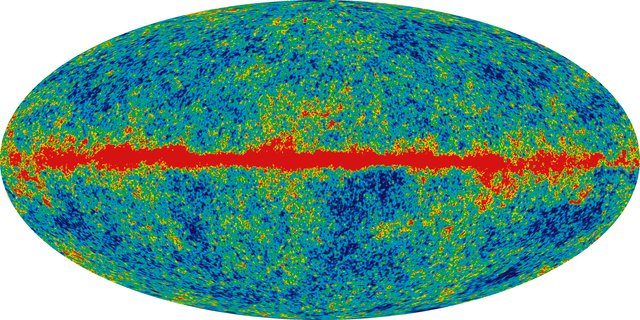This Airship Aims to Provide a Better View of the Big Bang's Relic Radiation

Despite the universe being billions of years old, today we can still see the early stages of the its expansion through a phenomenon called cosmic microwave background radiation. NASA describes the CMB as "literally the remnant heat left over from the Big Bang."
The energy is visible in microwave wavelengths, which means it can't be seen unless you're above the atmosphere somewhere, or in an area with thinner atmosphere, such as the high-altitude South Pole. But observations taken for spacecraft caught something extraordinary: a remarkably uniform background of about 2.275 degrees Kelvin, a few degrees above absolute zero, or the coldest possible temperature allowed by physics. Mapping and understanding the tiny variations of temperature at the part per million level that require ongoing observations and modeling.
Scientists have observed the CMB before with spacecraft, and even a specially adapted 747 called SOFIA (Stratospheric Observatory for Infrared Astronomy). A proposal published in the Monthly Notices of the Royal Astronomical Society suggests using an airship called Airlander 10, which is cheaper than a spacecraft, but allows for lengthy observations of up to weeks at a time.
"The main advantage is flight duration," Stephen Feeney, lead author and a postdoctoral researcher at the Flatiron Institute's Center for Computational Astrophysics in New York City, told Seeker in an email.
"Using remote piloting, Airlander 10 should fly for up to three weeks at a time," he said. "We could therefore observe the sky roughly 20 times longer on an Airlander 10 flight than using, for example, a 747 like SOFIA. Airlander 10 is also able to operate without an airport, and should have a significantly smaller environmental impact, as it generates 60 percent of its lift through buoyancy."
Airlander 10 is a hybrid airship — meaning that part of its lift, or ability to fly, comes from being filled with lighter-than-air gas, and the other part of its lift comes from aerodynamics. Originally designed and built for the US Army, the military sold the airship back to the manufacturer in 2016 for civilian use. It is now in test flights, having survived an accident, which damaged the airship, but left the crew unharmed. This means that Feeney's proposal is still in a very early stage.
"We are currently working with Hybrid Air Vehicles, Airlander 10's designers, to ascertain whether the vibrations from Airlander 10's engines are low enough to allow a CMB telescope to gather useful data," Feeney said. "If this critical criterion is satisfied, we will look to develop the concept further."
Breaking space news, the latest updates on rocket launches, skywatching events and more!
RELATED: Cosmic Rays Originate Far Beyond the Milky Way
Feeney's research, in part, concerns how to operate CMB detectors at higher altitudes, which requires knowledge of how they perform at sea level, then extrapolating their performance at higher and higher altitudes. The research also seeks to ways to avoid confusing radiation from galaxies, which are closer to us than the CMB. Both galaxies and CMB can emit radiation at the same wavelengths.
"These foregrounds can be cleaned from the CMB by observing the sky at many different wavelengths, as the amplitudes of the foregrounds and CMB change differently with wavelength," Feeney said.
One of the main goals of Airlander 10 observations is searching for gravitational waves that were generated when the universe was expanding exponentially, during a phase in its lifetime called inflation. The signal hasn't been observed yet, Feeney said, but the hope is to at least improve scientists' understanding of the amplitude of the imprint of gravitational waves on the CMB.
Originally published on Seeker.

Elizabeth Howell (she/her), Ph.D., was a staff writer in the spaceflight channel between 2022 and 2024 specializing in Canadian space news. She was contributing writer for Space.com for 10 years from 2012 to 2024. Elizabeth's reporting includes multiple exclusives with the White House, leading world coverage about a lost-and-found space tomato on the International Space Station, witnessing five human spaceflight launches on two continents, flying parabolic, working inside a spacesuit, and participating in a simulated Mars mission. Her latest book, "Why Am I Taller?" (ECW Press, 2022) is co-written with astronaut Dave Williams.

